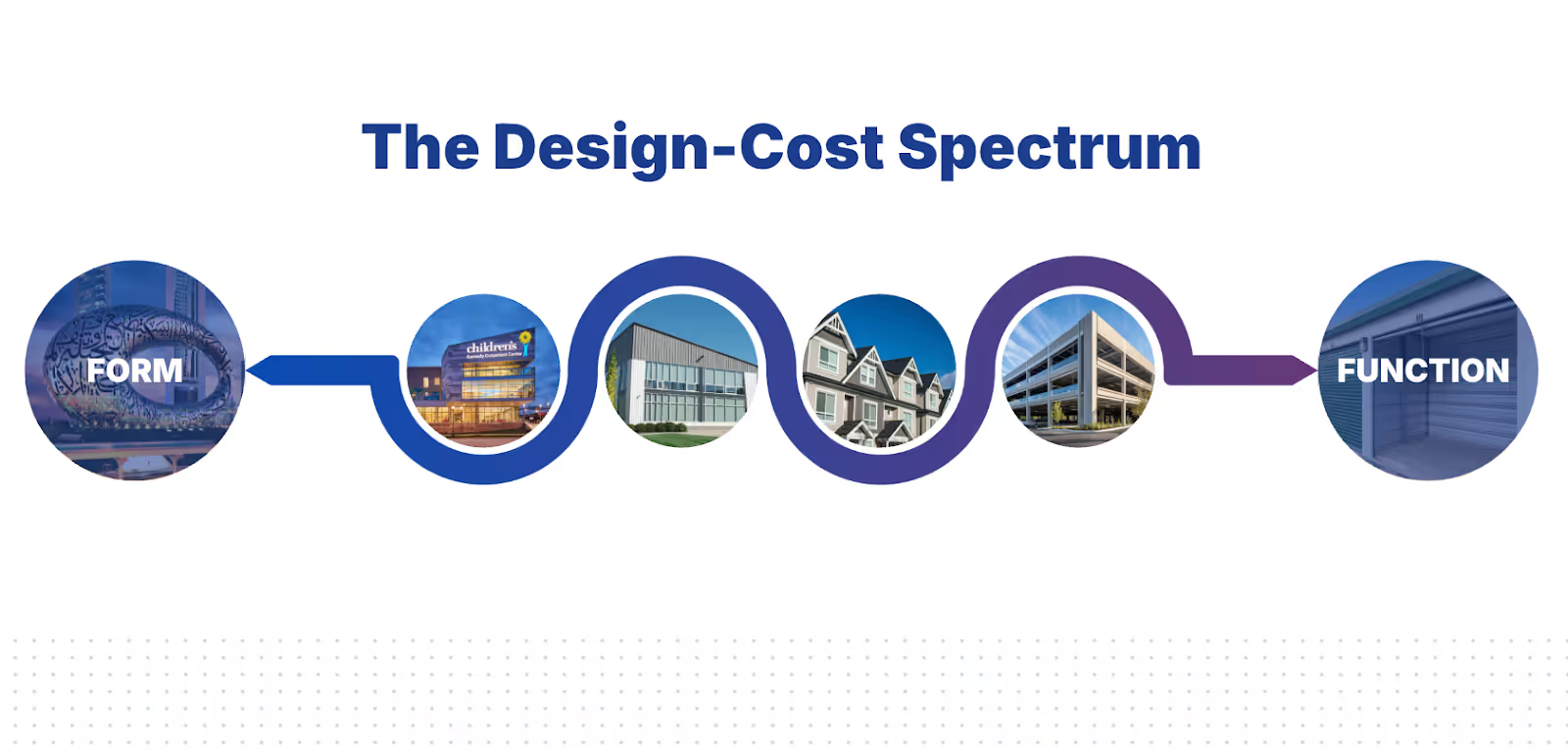
October 13, 2025


Imagine walking into a car dealership without any budget in mind, falling in love with a Lamborghini, and then trying to negotiate it down to $50,000.
This is objectively absurd, yeah?
But this is exactly how we approach construction projects every single day.
We start with design. We invest time and money into the blueprints, advance them through multiple phases — schematic design, design development, construction documents — only to discover that no one can afford to build them.
Why are we planning for something that we can’t afford?
It’s time we flip the paradigm.
Prefer to watch over read? Check out the full keynote speech from Construction Innovation Conference 2025👇
Every construction project exists somewhere on a spectrum between two extremes of:

But here's our take: In 2025, most projects skew towards function, where cost is a very critical (if not most important) component of a project.
If you're building schools, success is measured by seats in classrooms. For medical office buildings, it's the number of exam rooms. For multifamily developments, it's the long-term performance of the asset.
In each case, design matters, yes — but performance within budget matters more.
When we fail to recognize where a project falls on this spectrum, we create expensive problems:
The fundamental question remains: If cost is a critical factor for our clients and for most of our projects, why are we continuing to lead with design?
The future of preconstruction can't be built on Excel spreadsheets and desktop applications. We need cloud-based collaboration tools that allow real-time communication between all project stakeholders, not just within your team, but with designers, owners, and subcontractors.
Senior estimator Prashant Sharma from DPR found that a move to cloud shaved 2-3 days off of standard estimating cycles; because he was able to work with junior estimators from across the globe exactly like he would if he was standing at their desk.
Modern estimating tools should allow you to define building parameters before detailed design exists: square footage by asset class, floor-to-floor heights, perimeter calculations, unit mixes.
This enables high-fidelity estimates at the conceptual stage that can actually inform design decisions.
This is an exciting time for construction tech. Emerging, early-stage companies are presenting solutions to problems that have plagued the industry for decades.
If we continue to accept the status quo, we'll be left with only the legacy players who acquire rather than innovate.
If we want a better future for preconstruction, test what's possible. Because the cost of trying new solutions is minimal, but the cost of staying stagnant while the industry evolves around you is existential.
👉 Start with Ediphi and request a demo
The biggest problem isn't that projects go over budget. It's that we start with concepts that were never feasible to begin with.
Time to stop.
When we get our teams into cloud-based software to create true cost models based on real data early on, we inform both 2D and 3D work with realistic parameters from day one.
Budget before blueprints. Price before design. This is the future of precon.